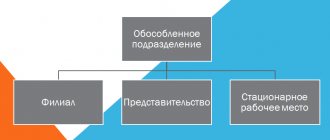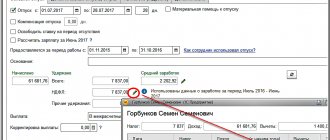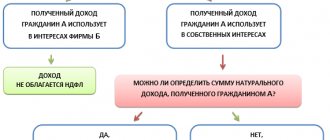Where does the money for paying transport tax go?
All owners of cars and other vehicles that meet special criteria are required to pay transport tax.
Its magnitude depends on a large number of different factors. Dear readers! The article talks about typical ways to resolve legal issues, but each case is individual. If you want to find out how to solve your particular problem , contact a consultant:
+7 (Saint Petersburg)
APPLICATIONS AND CALLS ARE ACCEPTED 24/7 and 7 days a week.
It's fast and FREE !
Moreover, payment is made not only by individuals, but also by legal entities.
Concept of the term
The Transport Tax Law is a regulation that regulates the tax paid by owners of cars and other vehicles equipped with sufficiently powerful engines.
It should also be remembered that some vehicles are exceptions, and their owners are not required to pay transport tax.
At the same time, the legislative authorities of individual constituent entities of the Russian Federation regulate the amount, as well as many other characteristics of this tax.
At the same time, federal legislation regulates the following important points:
- object of taxation;
- duration of the tax period;
- the procedure for calculating the tax itself;
- betting limits;
- the size of the tax base.
The following vehicles are subject to taxation:
- cars;
- buses;
- motorcycles and scooters;
- other self-propelled vehicles on tracked, pneumatic tracks.
Also, transport tax is imposed on all kinds of yachts, airplanes, sailing ships, jet skis and more. Exceptions are motor boats with engine power less than 5 hp.
Also, tax benefits do not apply to certain categories of citizens of the Russian Federation - WWII veterans, disabled people and their guardians, Heroes of Russia.
Who manages the collected funds: regions or the state? According to Art. 14 of the Tax Code of the Russian Federation, transport tax is regional.
From this point it follows that it necessarily goes to the regional budget. The state itself only regulates its value within certain limits - it sets limits.
Previously, before the reform of January 1, 2003, introducing a transport tax as such, all contributions from drivers went to special road funds. And then all the fees were spent on maintaining the roads in good condition.
Today, a tax of this type is transferred to the regional budget in accordance with Art. 56 of the Budget Code of the Russian Federation.
In connection with the legislative reform carried out at the beginning of the 2000s, the collected funds can be spent on almost anything:
- road industry;
- for public sector wages;
- construction of objects important for the regions.
Often this is precisely what worries car owners - with a sufficiently large transport tax, there is a high probability that all the funds will not be used for laying asphalt, or for something else.
Insurance premiums federal or regional budget
Local taxes and fees are those established by the Tax Code of the Russian Federation and regulatory legal acts of representative bodies of local self-government, put into effect in accordance with the Tax Code by regulatory legal acts of representative bodies of local self-government and mandatory for payment in the territories of the relevant municipalities. When establishing a local tax, representative bodies of local self-government define the following elements of taxation in regulatory legal acts: tax rates within the limits established by the Tax Code of the Russian Federation, the procedure and deadlines for paying the tax, as well as reporting forms for this local tax.
As you can see, not all taxes remain at the disposal of the region where they were collected. The current tax policy is such that significant amounts first go to the federal budget, and then are returned in the form of transfers to regional and municipal budgets.
What the law says
All aspects related in one way or another to transport tax are necessarily covered in legislation:
- Art. 357 of the Tax Code of the Russian Federation - indicates a complete list of all categories of individuals and legal entities obligated to pay the tax of the type in question;
- Art. 362 of the Tax Code of the Russian Federation – considers the procedure for calculating the amount of transport tax for legal entities;
- Art. 358 of the Tax Code of the Russian Federation - indicates a complete list of equipment whose owners must pay a transport fee;
- clause 3 art. 363.1 of the Tax Code of the Russian Federation - the payment deadline is indicated;
- Art. 83 of the Tax Code of the Russian Federation - the largest taxpayers must submit an appropriately drawn up declaration, which reflects the tax of the type in question;
- Art. 44 of the Tax Code of the Russian Federation - indicates cases in which the obligation to pay transport tax is abolished.
The very fact of distribution of the tax levy on vehicles directly by the municipality is regulated by Art. 14 of the Tax Code of the Russian Federation and Art. 56 BC RF.
It is according to the information of the Budget Code of the Russian Federation that the entire transport tax (in the amount of 100%) goes to the regional budget and is distributed by it for various needs at its own discretion.
Which cars are not subject to transport tax in Moscow, see here.
To what budget are insurance premiums paid to the federal or local
The calculation of insurance premiums is submitted to the tax office at the location of the organization and separately at the location of each separate division for which a current account is opened and which makes payments to individuals (clause 7 of Article 431 of the Tax Code). The deadline for submitting the calculation is no later than the 30th day of the month following the end of the quarter (reporting period - quarter).
When establishing a local tax, representative bodies of local self-government define the following elements of taxation in regulatory legal acts: tax rates within the limits established by the Tax Code of the Russian Federation, the procedure and deadlines for paying the tax, as well as reporting forms for this local tax.
Where is the transport tax money spent?
It is quite problematic to determine what exactly the funds collected in the form of transport tax will be spent on.
Thus, in many regions, authorities continue to form road funds, into which certain infusions are made from the budget.
But the amount of revenue is often simply not large enough to support the road industry even in satisfactory condition, let alone more.
Moreover, the authorities are not particularly willing to report on the funds spent on restoring the roadway. Since in most cases, transport taxes are used to patch holes in the budget.
For example, in the Volgograd region in 2021, about 2 billion rubles were withdrawn from the road fund budget for various types of needs that are in no way related to the target infrastructure.
In 2021, this amount increased by 2.6 billion rubles. Thus, at the moment, the budget deficit of the road fund is as much as 8 billion rubles.
At the same time, the size of the fund's budget is constantly increasing, but at the same time expenses are growing proportionally. As a result, the deficit, as before, continues to be approximately 8 billion rubles.
The situation is similar in almost all other regions of the country - with a few exceptions.
Nevertheless, there is a positive trend; an increasing number of regions are beginning to become concerned about the problems of the road industry.
Payment statistics by region
The amount of the fee in question varies greatly depending on a variety of parameters. First of all, this is the cost of the car, the amount of horsepower, as well as the age of the vehicle.
But at the same time, the region where the car is located has a significant impact. It is quite difficult to figure out where the lowest transport tax is in Russia.
Since there is a “luxury tax” (for cars over 3 million rubles) and many other, quite important, nuances.
Thus, all regions of the Russian Federation according to the amount of tax collected in 2021 for the previous reporting period can be ranked as follows (in descending order):
Taxes, fees and insurance premiums
If an individual decides to hunt, he may be charged a fee for the use of wildlife objects
.
If an individual decides to bring goods subject to customs declaration from abroad for personal use, he will have to pay customs duty
.
The book explains the rules for calculating such obligatory payments to the state as taxes, fees and compulsory insurance contributions. The emphasis is on common economic sense and the internal logic of legislation, mastering which will allow the reader to easily understand the most complicated tax situations in the future. Mandatory payments to the state are considered not from the position of their collector, as in other books on taxation, but from the position of the payer - an enterprise, an entrepreneur, an ordinary person
What is transport tax
Car owners often ask what the transport tax refers to and what it is paid for. This fee is one of 3 property taxes for citizens, according to the norms of the Tax Code of Russia (Chapter 28), established by regional law. It must be paid by the person to whom the title to the car is registered. The collection is mandatory, but there are exceptions (we will discuss them later).
In simple words, transport tax is a mandatory annual payment from the owner (individual or legal entity) of a vehicle, which is recognized by law as an object of taxation.
For non-payment, penalties, fines and even criminal liability are provided. Therefore, every owner of a car or other vehicle needs to know not only what vehicle tax is, but also when it needs to be paid.
Tax obligations to the state apply not only to owners of trucks or cars, but also to those who own two-wheeled vehicles. This means that transport tax must be paid for any vehicle, including air and water vehicles.
The money from the payment replenishes not the federal, but the regional budget. However, the amounts may differ in each region. Despite the fact that certain rates were prescribed in the Tax Code (Article 361 of the Tax Code of Russia), they are not final. The values may vary depending on where the car is registered, but no more than 10 times in the direction of decrease or increase.
Insurance premiums regional or federal
Individuals are owners of property recognized as an object of taxation. In the case of common shared property of several individuals, each of these individuals is recognized as a taxpayer in proportion to his share in this property.
- the period for which the transfer takes place. It can be different, including monthly advance payments for some mandatory taxes, for example, on profits;
- compliance with deadlines for reporting and payment of the next amount. For example, income tax is transferred no later than the 28th day of each month following the quarter.
What is transport tax paid for?
The authorities introduced this fee in 2003. Since then, many have been asking the question: how to find out what the transport tax is charged for?
Until 2002, there was a road tax in Russia, which was directed towards the maintenance of Russian roads: restoration, replacement of asphalt pavement. The quality of roads is affected not only by multi-ton trucks, but also by other vehicles. After the abolition of the road tax, a transport tax was introduced. However, now the funds go to the regional budget, and local authorities decide where exactly to allocate the money - for pavement repair or infrastructure development.
What is included in the transport tax? The amount of payment to the regional budget is determined taking into account:
- Tax base. We are talking about the engine power of a car and other vehicles, the power of which is determined in the established form - horsepower. When calculating the tax on aircraft, the thrust of the jet engine is taken into account, and on water vessels, the gross tonnage, measured in registered tons.
- Tax rate. Size depends on power, thrust, gross capacity.
- Duration of transport use.
The final amount may also be affected by the cost of the car. Since 2014, owners of prestigious brands have paid the so-called luxury tax. If a car is more expensive than three million rubles, then an increasing factor is added to the calculations. The more expensive the car, the higher the coefficient (minimum – 1.1).
150-175 150-200 200-225 225-250 From 250
Who doesn't need to pay tax?
Here's why transport tax doesn't apply:
- Cars owned by people with disabilities.
- Transport, which was received from social protection authorities. In this case, the vehicle engine power should be up to 100 hp.
- Boats without a motor and motor boats if the engine has a power of less than 5 hp.
- Transport used by the special services of the Russian Federation - police, ambulance, etc.
- Tractors, combines and other vehicles used in the agricultural sector.
- Stolen cars that are officially wanted.
- Owners of vehicles weighing more than 12 tons. If the amount of compensation for damage to roads is greater than or equal to the established tax payment for a given period.
Federal and territorial funds of compulsory health insurance of the Russian Federation
Territorial compulsory health insurance funds are created by the legislative and executive authorities of the constituent entities of the Russian Federation. The financial resources and property of all compulsory health insurance funds are federal property.
The health insurance contract is considered concluded from the moment the first insurance premium is paid. Every citizen in respect of whom a health insurance contract has been concluded or who has concluded such an agreement independently receives a medical insurance policy that is in the hands of the insured person.
Failure to pay transport tax: what could be the consequences?
Notifications that an individual needs to pay taxes are sent by tax authorities. However, if the vehicle owner has not received such a document for some reason, this does not relieve him of financial obligations to the state.
Previously, if there was no official document, the court could acquit the owner and release him from the debt. Nowadays, lack of notification is not a reason for tax evasion. You need to contact the tax office or get information on the Federal Tax Service website. Tax evasion on vehicles can be caused by:
- Accrual of penalties. The amount of debt is multiplied by the number of days overdue and 1/300 of the refinancing rate.
- Penalty for late payment. The violator must pay 20 percent of the debt. If the tax was not paid specifically, the fine increases to 40 percent of the amount of debt.
- Legal action and confiscation of property, seizure of bank accounts.
Individuals must pay vehicle tax by December 1 of the following reporting year, and legal entities - by February 1. If the car was purchased in 2021, then payment must be made before December 1, 2020. The tax amount is calculated at 2021 rates. If the first day falls on a day off, then payment is made on the first working day.
To find out whether the tax on your car has been paid, you need to visit the bank, tax office or “My Documents” service at your place of registration. The staff will pull up the information from the database and verbally report if everything is ok. You can also check transport tax data on the Federal Tax Service website, in the mobile application from this website and on the State Services portal.
You can create a personal account on these resources by contacting the employees of the “My Documents” service or the Federal Tax Service. Unfortunately, you won’t be able to do this yourself from home. Many car owners see this fact as a serious inconvenience and try to stop using these sites and applications.
Moreover, there is a simpler option. You can find out if you have a tax debt for owning a vehicle, and also make payment online without visiting a bank branch using our website. You can check your transport tax in three stages:
- On any page, click “Transport” in the right menu “Taxes 2019. Check and payment”.
- Fill in the fields of the form that opens. Be sure to enter your TIN, the system uses it to check. If the car is registered to an enterprise, you need the organization's TIN. Enter your email address in the bottom line. You will receive a receipt if you decide to pay tax through our website. If you have a transport tax receipt in your hands, additionally enter the UIN indicated on it. But this is not necessary; if there is no receipt, do not fill out this line.
- Click “Taxes 2021. Check taxes” and wait for the result. If you have a debt, a message will appear on the screen asking you to pay online. All you have to do is pay with a card or e-wallet, following the simple instructions of the smart system. Save or print the electronic receipt that will be sent to you by email.
Advantages of electronic verification:
- Saving time and effort. There is no need to waste precious time on travel, queues, or communication with employees.
- Possibility of resolving issues at the chosen time. You can check and pay transport tax at any time, regardless of working day.
- Simplicity. There are no complicated long procedures. The instructions on the payment pages are written in simple language; there are no complex legal or financial terms on the site.
Mandatory health insurance contributions to the FFOMS in 2021
Special systems offer a simpler and more convenient way to make insurance payments, as well as generate reports and control interaction with the Federal Tax Service. For example, the Elba online accounting system automatically makes payments at a given time, generates payslips and sends them to the Tax Office for verification.
Insurers are required to make contributions in accordance with Federal Law No. 165 dated July 16, 1999. For evading them, only a fine is currently provided, but in the future (before the end of the year) liability up to criminal liability may be introduced. The rules for payment and reporting have changed, and in order not to conflict with the Tax Service, you should know how to pay insurance premiums to the FFOMS in 2021.
Basic principles of tax operation
Until 2002, every car owner in the Russian Federation paid the so-called road tax. This collection was targeted, and therefore the funds received were allowed to be spent only on roads (repair, construction and maintenance in good condition) - the money was accumulated in specially created road funds, which controlled the distribution of expenses.
Since January 1, 2003, during the reform, the system described above ceased to exist. Road funds were abolished, and the corresponding tax was replaced by transport tax (TN). This money is already going directly to the regional budget. At the same time, various subjects of the Russian Federation are additionally given the right, at their own discretion, to change the amount of tax (within the framework established by law) and, more importantly, to freely spend the funds received. That is, the regional leadership can quite easily spend the proceeds from the transport tax on holding, for example, festive events for City Day and launching fireworks.
On the one hand, such a system has made the budgets of the constituent entities of the Russian Federation flexible - after all, they now have the right to finance any projects they deem necessary and have the ability to quickly redistribute funds. At the same time, the current state of affairs causes fair indignation among motorists, because they transfer large sums of money to the budgets in the form of taxes, but do not see any improvements in the current condition of the roads.
How can regions manage funds?
Due to the reasons described above, it is quite difficult to determine where exactly the money collected from the population through TN goes. They may indeed be spent on road repairs, but often the bulk of the funds are spent on projects that have nothing to do with traffic at all. Roughly speaking, these revenues are used as a kind of reserves, with the help of which holes in particularly problematic budget items are patched.
It is worth noting that individual constituent entities of the Russian Federation are still trying to maintain the system of road funds and honestly direct part of the cash flow from fees there. However, this practice is quite rare and even in these regions the condition of the road surface usually leaves much to be desired. For example, we can consider the Volgograd region, where such a fund exists. In 2014, more than 2 billion rubles were withdrawn from the budget allocated for roads for various needs (not related to roads). In subsequent years, the situation did not improve and at the moment the fund's budget deficit is about 8 billion rubles. The situation is approximately the same in other regions.
Federal and territorial compulsory health insurance funds
The introduction of compulsory health insurance in our country in 1993 and the creation of the Federal Compulsory Health Insurance Fund, as well as territorial compulsory health insurance funds, contributed to the emergence of fundamentally new approaches to the organization of financial mechanisms of medical care based on insurance methods. The accumulated experience is reflected in the Federal Law of November 29, 2010 No. 326-FE “On Compulsory Health Insurance,” which regulates processes related to this type of insurance. However, the insignificance of contributions to compulsory health insurance (until recently, of the 26% UST rate, this part was 3.1%, respectively - 1.1 and 2.0%) limited its costs in regulating the provision of funds from territorial funds, as well as the possibility of compulsory medical insurance. insurance. As a result of innovations that became reality in 2009, 5.1% of the UST rate is allocated for compulsory medical insurance, including for the formation of the Federal Compulsory Medical Insurance Fund - 2.1%, territorial - 3%. This is natural - the main costs of health insurance are borne by territorial funds. The Federal Fund is a source of equalization of medical insurance conditions in the regions. Territorial compulsory medical insurance budgets receive support from the corresponding budgets for medical insurance of the non-working population.
- insurance principles of healthcare financing have not been properly implemented;
- insurance mechanisms that promote the development of competition have not been introduced; the required minimum amount of financial resources has not been introduced into the real financial turnover of the health insurance system:
- Health care workers are among the lowest paid categories. The system and level of remuneration do not stimulate them to perform high-quality and effective work. Within the framework of the national project “Health”, wages for medical personnel increased, but unevenly, and therefore there is unjustified differentiation;
- the increase in the cost of new medical technologies and rising health care costs, which exacerbates the problem of economic efficiency in the use of resources:
- increasing import dependence on medicines and medical equipment and equipment purchased at high prices;
- the absence of system-forming laws regulating the healthcare sector did not allow the formation of the unity of this social institution, and the transition to private law regulation of these relations led to a weakening of the regulatory function of the state;
- the existing multi-channel financing and different legal regime for spending financial resources from budgets of all levels, compulsory and voluntary health insurance, paid services is one of the reasons for their ineffective spending;
- there is a loss of consistency and controllability of the industry with the remaining management bodies at all levels;
- contradictory status of medical institutions.
Practice of spending tax funds in the constituent entities of the Russian Federation
The authorities of most regions do not even hide the fact that the bulk of the proceeds from the transport tax will be spent on needs unrelated to road infrastructure. Thus, in the Kama region and Ufa, the collected funds are redistributed between municipalities and they, in turn, decide the future fate of the money - most often they go to the construction of social facilities (kindergartens, hospitals, etc.), which usually lack funding, allocated by the target budget. In Chuvashia, transport tax is used to pay child benefits and cover the costs of benefits for veterans and other needy categories of the population. In Krasnodar, the collected funds are spent on the salaries of employees of budgetary organizations, mainly related to healthcare and education. The situation is different in the Omsk and Kirov regions - the Administration of these regions claims that the transport tax here is spent only for its intended purpose. And any increase in rates has a positive effect on the condition of roads in cities.
Replenishment of the state budget: land tax
Federal legislation exempts universities, research and scientific institutions, healthcare real estate, culture, sports organizations, tourism and a number of others from paying land tax. A complete list of persons exempt from this type of tax can be found in the Tax Code (Chapter 31, Article 395) and the Federal Law “On Payment for Land” (Article 12).
More to read: Obtaining Benefits as a Veteran of Labor Under Temporary Registration
Benefits are usually provided to budgetary institutions working in the social sphere. Schools, kindergartens, sports clubs and the like. Who is entitled to receive such a benefit, the procedure for receiving it, as well as the list of beneficiaries can always be found on the state portal of a particular region on the Internet. There you can also get comprehensive information about whether pensioners must pay land tax.
What is the transport tax used for?
The car tax goes entirely to regional budgets. Many motorists are confident that the money they contribute in the future will go exclusively to the maintenance and repair of roads. Actually this is not true. The car tax has no intended purpose. All amounts contributed go to the general budget of the region and are mixed there with revenues from other sources. In the future, they go to provide expenditure items of the local budget (salaries of state employees, construction of schools and kindergartens, etc.). Something, of course, ends up on the roads, something is generally lost in an unknown direction.
Where to spend the money received from motorist taxpayers is decided by the local administration. Some governors say that they deliberately spend the funds collected from the transport tax only on improving the region's road infrastructure. Others do not attach much importance to this aspect and, accordingly, cannot give a clear answer to such a question.
To what budget do taxpayer insurance contributions go?
Search for Lectures INTRODUCTION Calculation of taxes and fees determined by law for payment to budgets of various levels. In accordance with Art. 8 of the Tax Code of the Russian Federation, a tax is understood as a mandatory, individually gratuitous payment levied on organizations and individuals in the form of alienation of funds belonging to them by right of ownership, economic management or operational management, for the purpose of financial support for the activities of the state and (or) municipalities. A fee is understood as a mandatory fee levied on organizations and individuals, the payment of which is one of the conditions for state bodies, local governments, other authorized bodies and officials to carry out legally significant actions in relation to fee payers, including the granting of certain rights or the issuance of permits (licenses). ).
Federal taxes are payable throughout the Russian Federation. And these include: - value added tax - a tax that is included by the manufacturer in the cost of the product, so the tax is paid by the buyer; - excise taxes - tax on socially dangerous goods: alcohol, tobacco, cigarettes, etc.; - tax on income of individuals, as the name implies, this tax is payable if an individual receives any profit - wages, dividends, etc.; - unified social tax, includes payments to the federal budget, FFOMS (Federal Mandatory Medical Fund) education), TFOMS, FSS (Social Insurance Fund); - corporate income tax; - mineral extraction tax; - water tax; - fees for the use of wildlife and for the use of aquatic biological resources; - state duty.
How is vehicle tax calculated?
The procedure for calculating transport tax is determined by Article 28, Part 2 of the Tax Code of the Russian Federation. The basic table of transport tax is given in Article 361 of the Tax Code. The table shows that the greater the vehicle engine power, the greater the tax will be. However, the figures published in the article for the regions are only advisory in nature. Each region has the right to set its own transport tax rate. The only thing is that local rates cannot differ more than tenfold (down or up) from the base ones. And for cars with an engine power below 150 hp. With. Even this limitation does not apply.
For comparison, here are the minimum car tax rates (for cars with an engine less than 100 hp) in some territories for 2015:
The base rate is 2.5 rubles per horsepower,
Novosibirsk region – 6 rubles,
Moscow – 12 rubles.
As you can see, there is a difference.
Insurance contributions for compulsory pension insurance of budgetary institutions
Before making a decision to collect arrears on insurance premiums, penalties and fines, the territorial body of the Pension Fund of the Russian Federation, within three months from the date of receipt of information about the amount of debt from the tax authorities, sends the policyholder a demand for payment of arrears on insurance premiums, penalties and fines.
The decision to collect arrears of insurance premiums, penalties and fines shall indicate the procedure for appealing the decision to a higher body of the insurer, as well as the name of this body, its location, and other necessary information.
Where to pay transport tax
Car tax is paid only according to notifications sent by local tax inspectorates. As a rule, such notices are accompanied by receipts for payment.
With this receipt you can go to any bank office and make the required payment there. However, even if you lost the receipt or did not receive it at all, you can make payment without it. At Sberbank, for example, you only need to present your passport and indicate the purpose of the payment. The database operator will independently determine the details and amount of payment.







